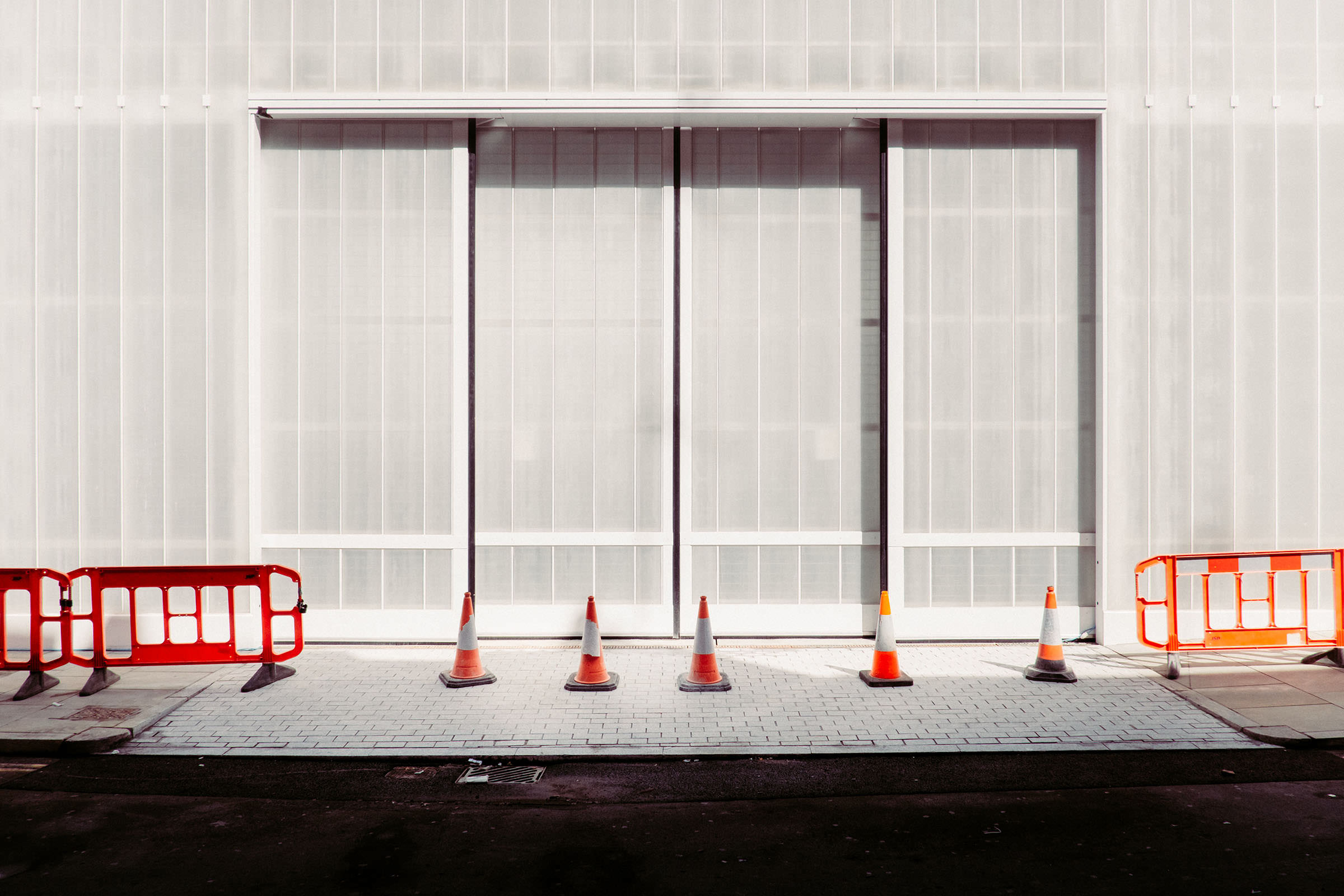Coordination, sequencing, job site storage, schedule, and budget are all obstacles we encounter on a project. We strive to set our customers and team up for success by brainstorming and preplanning in areas that can make a difference. Selecting the right door frames for your project is one area we have found to make a huge impact in a variety of ways. Let us explain more!
Schedule & Cost Impact of Hollow Metal Door Frames
On a typical project, the General Contractor must order and coordinate the delivery of the hollow metal door frames. With the delivery comes the need to organize on-slab storage (which can cause disruption to the ongoing activities) or have Conex storage units available to receive the frames (which can clog site activities and provide additional project cost). The hollow metal frames arrive completely assembled and are bulky, which takes up valuable space. Additionally, manpower is required to offload the frames, store them, then “shake them out.”
The installation sequence for hollow metal door frames requires the frames to be onsite before the openings can be framed. Often the door frames are not delivered during the correct stage of the framing process, which results in the door openings not being framed in sequence. Additionally, when hollow metal frame deliveries are delayed, the project schedule may require the drywall to be hung yet the door openings are still not framed. You now have the scenario where manpower is redirected back to complete door opening framing, possibly completing the drywall hanging, and setting the door frames out of sequence, which is extremely costly and can have a negative impact on the project’s progress.
Another issue related to hollow metal frames is the constant abuse they take during typical construction. The frames are repeatedly hit with ladders and impacted from man lifts, which results in the frames being moved from their original set position. Again, this requires valuable manpower having to return once again to correct the frame alignment when they could be productive in other areas of the project. Lastly, hollow metal frames arrive to the site unfinished. The frames require repair (typically in the form of “Bondo”) and field-applied paint.
The Solution
Today, more than ever, the need to reduce project schedules while incorporating environmentally friendly products are at the forefront of most projects. One product that has the ability to satisfy both goals are aluminum door frames.
Durable and Environmentally Friendly
Aluminum door frames have an excellent strength to weight ratio and are 100% recyclable. Lifecycle studies have shown that aluminum door frames have a 20% smaller energy consumption impact and offer the lowest total carbon footprint when compared to hollow metal frames.
Easy Installation/Manpower Reduction
Aluminum frames are shipped unassembled and individually packaged per opening thus reducing the amount of manpower and storage space required to deliver and store them. A significant advantage that aluminum frames provide is they are installed once the carpet is complete. This eliminates all potential negative schedule and manpower impacts mentioned above. Crews can now frame the door openings and hang the drywall in the proper sequence without being impacted by hollow metal frames not being on site.
Since typical installation obstacles have been removed, many times the aluminum frames are installed faster than hollow metal frames. Aluminum frames are prefinished, which again eliminates a step in the construction process which saves time, eliminates the manpower required to be onsite (painters), and provides a consistent factory applied finish without brush strokes or paint runs.
Customization
From a design perspective, aluminum door frames possess sharp crisp corners, and the frame fabrication is consistent from frame to frame. Some aluminum frame manufacturers offer multiple face profile widths to provide for different design choices. Aluminum door frames can be ordered prefinished in any color. Should the end user desire to add sidelights post-construction, it is a simple frame addition (hollow metal frames would require the entire frame to be replaced) as screw spline joinery is built into the system.

